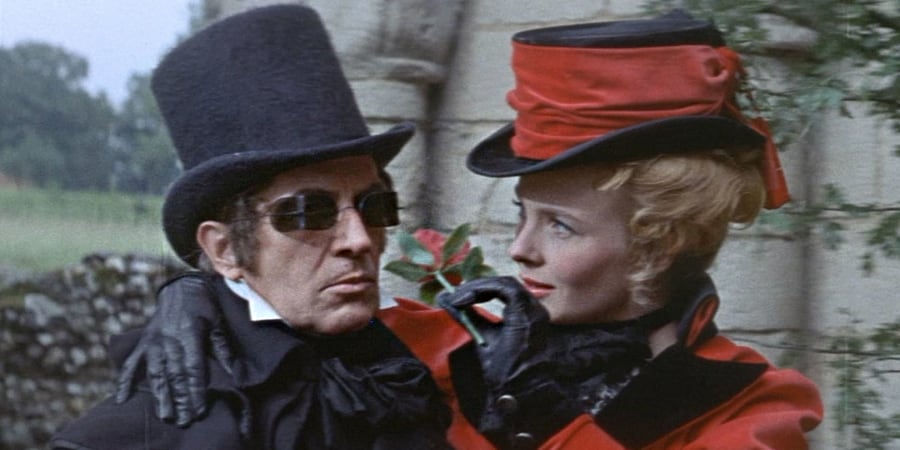
Ligeia
Ligeia, by Edgar Allan Poe, is a six-thousand-word hallucinatory tale about an intense marriage that survives beyond death. The narrator is looking back, remembering his wife, Ligeia, who he idolised. When she dies unexpectedly, he moves to an abbey in Cornwall, decorates it opulently with Egyptian artifacts, and marries again, this time to the ‘fair-haired and blue-eyed Lady Rowena Trevanion, of Tremaine’.
Still obsessed with the black-haired, dead Ligeia, who he describes in tortuous detail, he takes opium to numb his grief, and treats Rowena terribly. After a month of marriage, Rowena falls suddenly ill, recovers, but falls ill again, and in opium-infused memories he sees a ghostly form put poison in her drink. Ligeia was sure that she could avoid death through the force of her own will, and the narrator believes her ghost comes back in Rowena’s body.
Ligeia was first published in 1838, in American Museum magazine, but was revised extensively in future publications. Critics liked it, George Bernard Shaw loved it, and some thought it to be a satire of the gothic fiction of its day. It’s written in an intense, overwrought style, common at the time, and it may well have been deliberately so to make fun of it even in 1838. As the first Poe story I’ve read, it’s hard for me to judge, and it makes me wonder what the others are like.
The narrator’s love for Ligeia is like a son with his mother. It’s unnaturally intense in adulthood, and in the story’s language there are hints of foul play in her death. He paints her as an academic enchantress, which must have been as terrifying as it was seemingly satisfying. It makes me wonder if the narrator killed Ligeia — and then killed his second wife too.
In Archetypal Projection in “Ligeia”: A Post-Jungian Reading, Joseph Andriano sees the narrator as charmed by an anima daemon, a shadow feminine character, who stays alive in him and comes back through his wife-imposter. He ‘kills his mother’, only to find her again in the next woman he marries. Another analysis of Ligeia observes the sex hidden beneath the Victorian veil, and suggest Poe is a ‘genteel pornographer’.
After buying the Blu-ray player (!), I watched Roger Corman’s The Tomb of Ligeia (1964), which looked beautiful. Vincent Price acts his socks off as Verden Fell, the name given to the narrator by screenwriter Robert Towne. Fell buries his wife, Ligeia, in the graveyard at his abbey, but his grief is interrupted by Elizabeth Shepherd as a persistent, dynamic Lady Rowena, attracted to the abrasive, unpleasant Fell. The story doesn’t have much overlap with Poe’s original, focussing on mesmerism rather than opium or witchcraft, and it ends with the standard sixties gothic trope of an old building burning down, but it’s charming, with excellent dialogue, and pleasingly committed performances for a tightly-budgeted (aka cheap) Corman film. Lots of cats are thrown around. Shepherd has a dual role, which reminds me of Barbara Steele in Black Sunday (1963). I wonder if Corman was influenced by Mario Bava.
I could go in several directions from here — more Poe short stories, more Poe adaptations by Corman (he made eight between 1960—64, his ‘Poe cycle’), more Cornish horror shorts, or coastal horror stories in general… having a small project this week worked well.